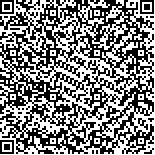| 引用本文: | 蔡洪月, 刘 楠, 温美红, 任 海, 简曙光.西沙群岛银毛树(Tournefortia argentea)的生态生物学特性[J].广西植物,2020,40(3):375-383.[点击复制] |
| CAI Hongyue, LIU Nan, WEN Meihong, REN Hai, JIAN Shuguang.Ecological and biological characteristics of Tournefortia argentea in Xisha Islands[J].Guihaia,2020,40(3):375-383.[点击复制] |
|
| |
|
|
| 本文已被:浏览 7692次 下载 3323次 |

码上扫一扫! |
|
|
| 西沙群岛银毛树(Tournefortia argentea)的生态生物学特性 |
|
蔡洪月1,2, 刘 楠1, 温美红1,2, 任 海1, 简曙光1*
|
|
1. 中国科学院华南植物园, 广东省应用植物学重点实验室, 广州 510650;2. 中国科学院大学, 北京 100049
|
|
| 摘要: |
| 银毛树(Tournefortia argentea)为紫草科紫丹属常绿小乔木或灌木,是东半球热带海岸和海岛常见的先锋植物,具有重要的生态价值、观赏价值和食用价值。为掌握银毛树对热带珊瑚岛环境的生态适应机理,为其保护和开发利用提供基础资料,该研究以西沙群岛东岛自然生长的银毛树为对象,对其形态解剖结构、生理学特征、叶片营养元素和根际土壤的理化性质等进行了分析。结果表明:(1)银毛树具有叶表面气孔密度低、比叶面积小、海绵组织发达、枝条的空腔比高等特点,有较好的储水抗旱能力。(2)银毛树叶片表面有厚密白色绢毛覆盖,可以反射强光、降低水分散失,有利于其适应强光和干旱环境。(3)银毛树叶片的脯氨酸含量较高,能够很好地抵抗渗透胁迫,为细胞提供良好的生存环境。(4)银毛树生长的土壤呈强碱性,养分和水分含量较低,但其叶片营养元素含量正常,表明其对土壤养分的利用率高,能够很好地适应瘠薄的土壤环境。(5)银毛树木质部密度低,枝干脆弱易折,可防止被大台风连根拔起,同时枝干含水丰富,有利于其抵抗台风及树冠的快速恢复。因此,银毛树能较好适应干旱、强光和瘠薄的滨海沙滩环境,在热带珊瑚岛(礁)或滨海地区防风固沙及植被恢复方面有较好的应用前景。 |
| 关键词: 银毛树, 生态生物学特性, 抗逆性, 开发利用 |
| DOI:10.11931/guihaia.gxzw201808021 |
| 分类号:Q948 |
| 文章编号:1000-3142(2020)03-0375-09 |
| 基金项目:国家自然科学基金(NSFC)-广东联合基金(U1701246); 中国科学院A类战略性先导科技专项项目(XDA13020500); 军队后勤科研项目(BY115C005)[Supported by the NSFC-Guangdong Province Union Fund(U1701246); Strategic Priority Research Program of the Chinese Academy of Sciences(XDA13020500)]。 |
|
| Ecological and biological characteristics of Tournefortia argentea in Xisha Islands |
|
CAI Hongyue1,2, LIU Nan1, WEN Meihong1,2, REN Hai1, JIAN Shuguang1*
|
|
1. Guangdong Provincial Key Laboratory of Applied Botany, South China Botanical Garden, Chinese Academy of
Sciences, Guangzhou 510650, China;2. University of Chinese Academy of Sciences, Beijing 100049, China
1. Guangdong Provincial Key Laboratory of Applied Botany, South China Botanical Garden, Chinese Academy of
Sciences, Guangzhou 510650, China; 2. University of Chinese Academy of Sciences, Beijing 100049, China
|
| Abstract: |
| Tournefortia argentea is an evergreen plant of Boraginaceae with important ecological, ornamental and edible values. It is a pioneer species at the tropical coastal and island of the Eastern Hemisphere. In order to provide basic data for protection and utilization of T. argentea, and to understand the ecological adaptation mechanism on tropical coral islands, we selected individuals of T. argentea naturally growing on Dongdao Island of Xisha Islands to examine their morphological and physiological characteristics, nutrient composition, and the physical and chemical properties of their rhizosphere soil. The results were as follows:(1)T. argentea was a heliophyte, characterized with low stomatal density, small specific leaf area, well developed spongy tissue, large ratio of branch to cavity, which help T. argentea to keep moisture and obtain water effectively.(2)Thick white hair on leaf surface of T. argentea could reflect strong light, decrease water evaporation, and was helpful for it to acclimatize the environments of strong light and drought.(3)The content of proline in leaves of T. argentea was high, but the content of malondialdehyde was low, indicating that T. argentea had good drought resistance.(4)The content of nutrient elements were high in plant leaves but low in rhizosphere soil, suggesting that T. argentea was able to use nutrient elements of rhizosphere soil effectively and had strong tolerance to barren soil. The branches were fragile and easy to break, which helped T. argentea in preventing from being uprooted by typhoons. Moreover, the branches were water-storing tissues so after typhoon the crown could be recovered quickly. In a word, T. argentea can adapt to various environmental stresses, such as strong light, gale, drought and barren soil. Therefore, T. argentea can be used as an important plant species of vegetation restoration in tropical coral islands. |
| Key words: Tournefortia argentea, ecological and biological characteristics, stress resistance, exploitation |
|
|
|
|
|